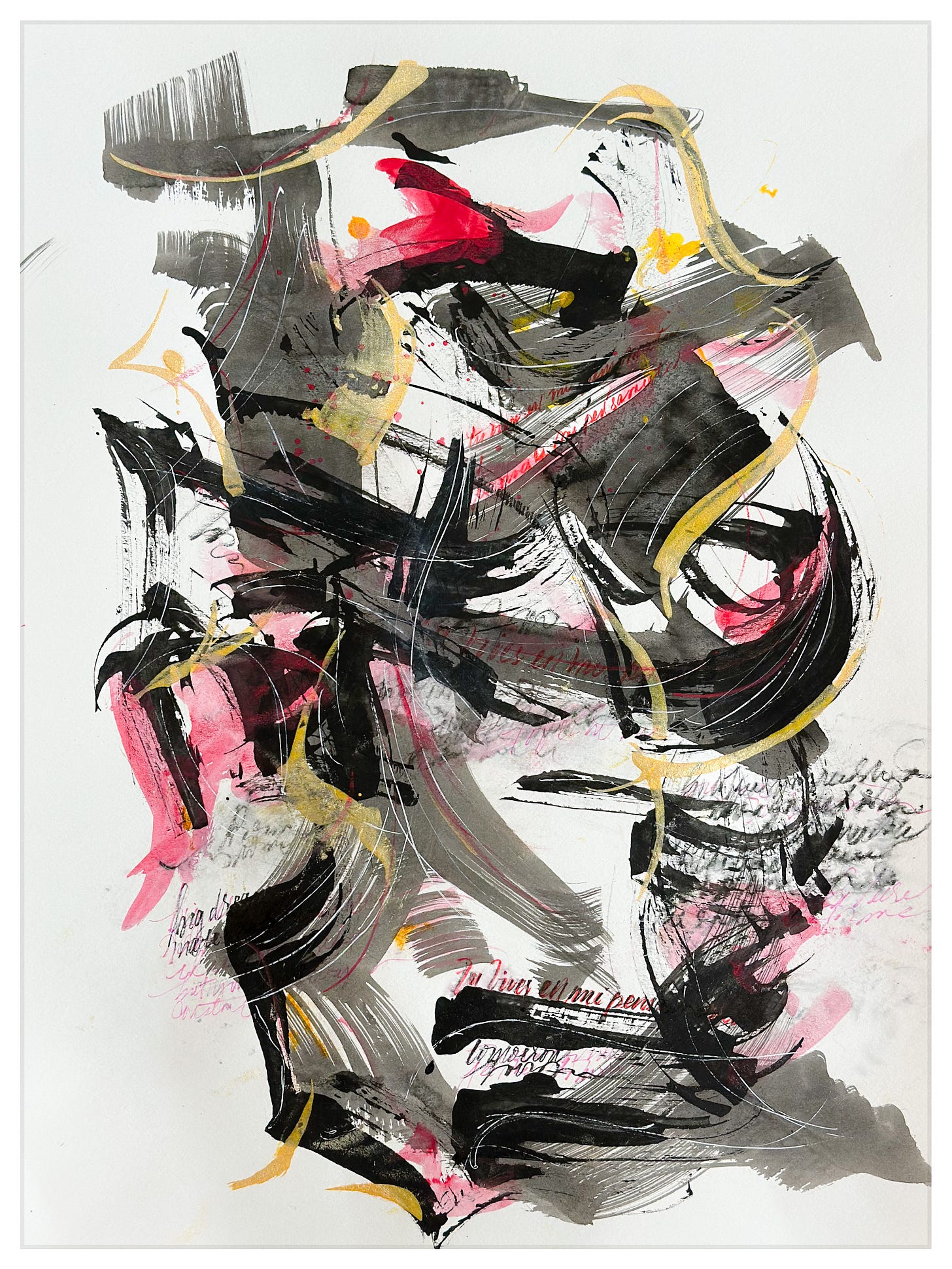
I started this essay last Sunday but I could not finish. I could not even think clearly. The thoughts were all jumbled up in my mind and it was hard to articulate any coherent word. You might think I am having an episode of sorts. Ha! No. It was a case of simply having encountered a lot of information about the direction my current project is taking and not being able to express it yet.
To be clear, I am not that clear yet. My process always consists of going into deep rabbit holes and taking tangents. Somewhere along the line a connection, a word, a thought brings me back. I have learned to wait patiently for my thoughts to settle.
Two or three weeks ago I spoke of my new project in Movement and Joy. I have continued to explore avenues. To be specific, I am playing with large sheets of paper, brushes on a stick, and dancing around said paper. I have also tested (today, actually) dipping a mop on a small bucket with ink. For the mop, the paper was larger and I had to go outside.
The title of today’s post is blind steps because I feel I am taking steps in the dark. I really don’t know what these pieces are actually going to look like. Will I cut them? Or will I leave them large? Will I fold them? Or bind them? Those questions are only a part of the long list of questions I have. The rest of the questions have to do with now that the ink has been brushed into the sheets, what happens next? The ink was never intended to be the only layer. I am planning to add words, letters, textures, and colors. But in what order? And how?
These are fun questions really. This process is one of experimentation and not knowing or not having all the answers is part of it. My co-mentees in the group (see Movement and Joy) know exactly what their final piece will look like. In my case, aside from knowing I am using paper, I only have a blurry idea of the final form.
What I am exploring is not a new path. Many artists have explored and explore the intersection between drawing, painting, and movement. They also play with their body being the tool they draw or paint with. Artists such as Tomoko Kawao, Yukimi Annand, Mario Uribe, and dancers who used their bodies to draw as well like Trisha Brown (1936-2017). Heather Hansen is an artist based in New Orleans who is famous for her symmetrical charcoal drawings using her entire body on large sheets of paper.
The interaction between movement, dance, and drawing or painting has become now a focal point in my exploration. Where is the line— if there is such a line, between drawing and painting? What is the relationship between the tools and these factors? But, more importantly why does it matter? This is the part that I always feel is important to answer. There is something quite cathartic about actually making these pieces involving my moments. It gives me a deep satisfaction to create them.
On the examples above, many of the artists are using their bodies by physically laying down on the paper and moving around it. When I started this project I was and still am more influenced by Matisse’s way of using a large stick and the tool attached to it. This method gives me less control but it allows me to dance or move around the paper like I would move around the dance floor. I do not dance all the time but I certainly have to move around the paper making it the center of my attention. I think working this way allows me to explore ranges of flow while making lines.
In the midst of all of this I felt quite anxious to try layering color and words on one of the smaller pieces. Below is the picture.
And here are some of the large paper pieces I have done so far.
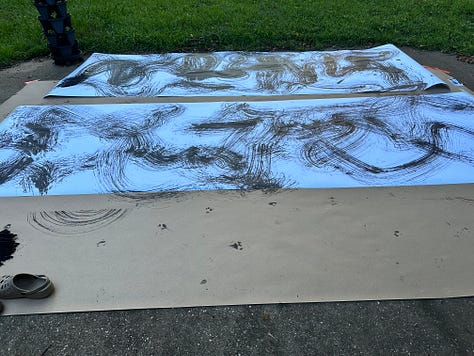

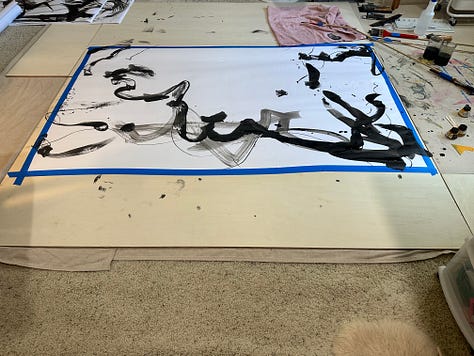

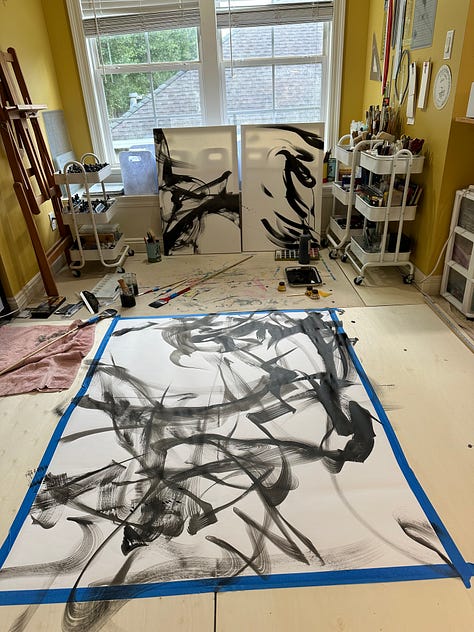
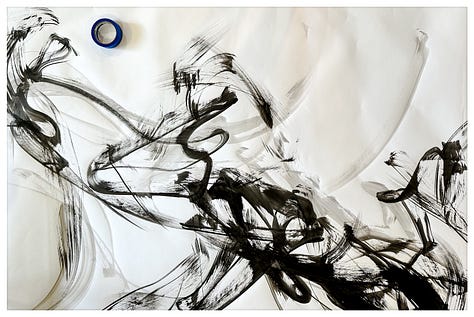
There are a few more but I have not yet photographed them.
I don’t have all the answers yet. I still have more to explore. In fact, a new order for a paper roll was just placed.
Love,
Alma




